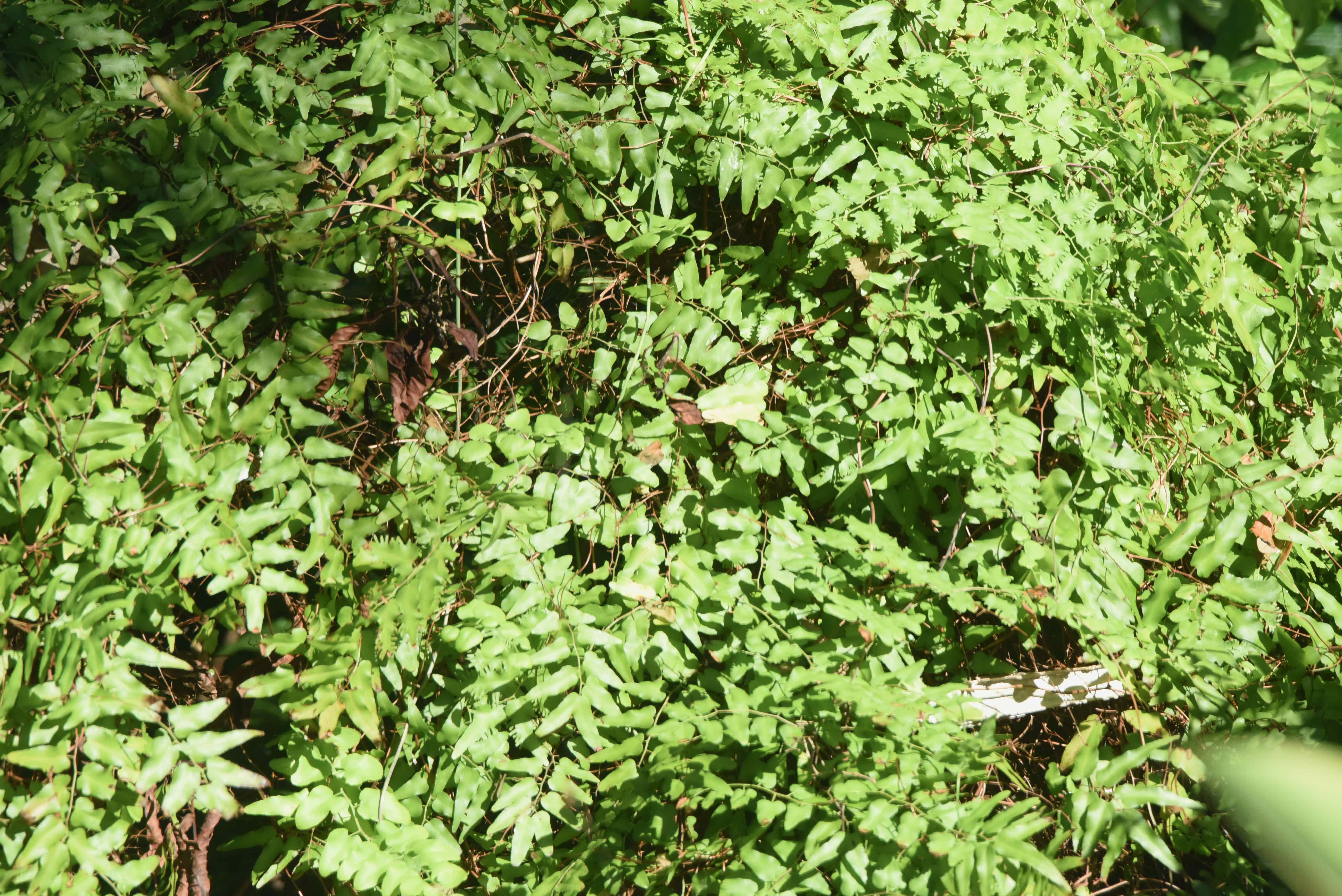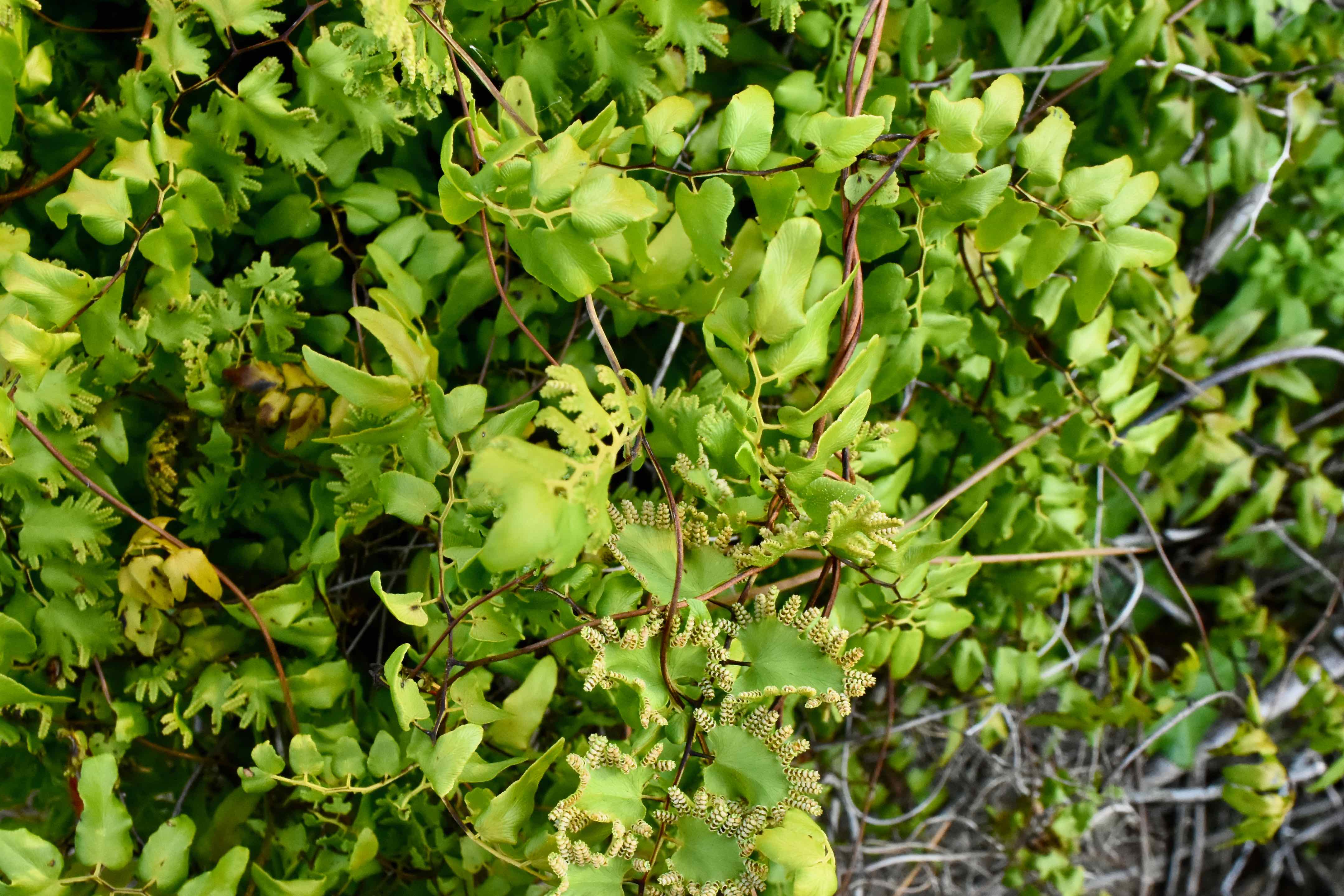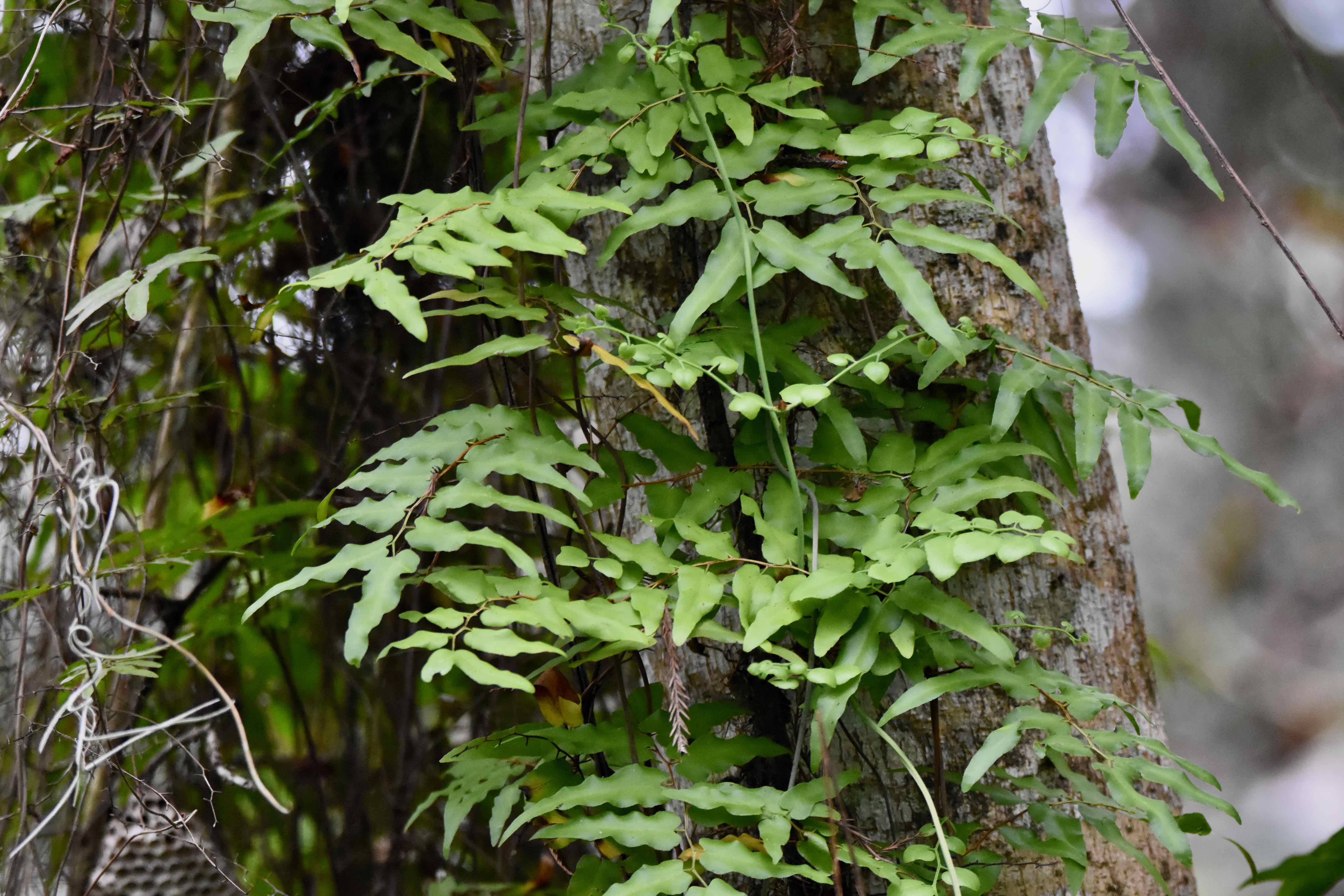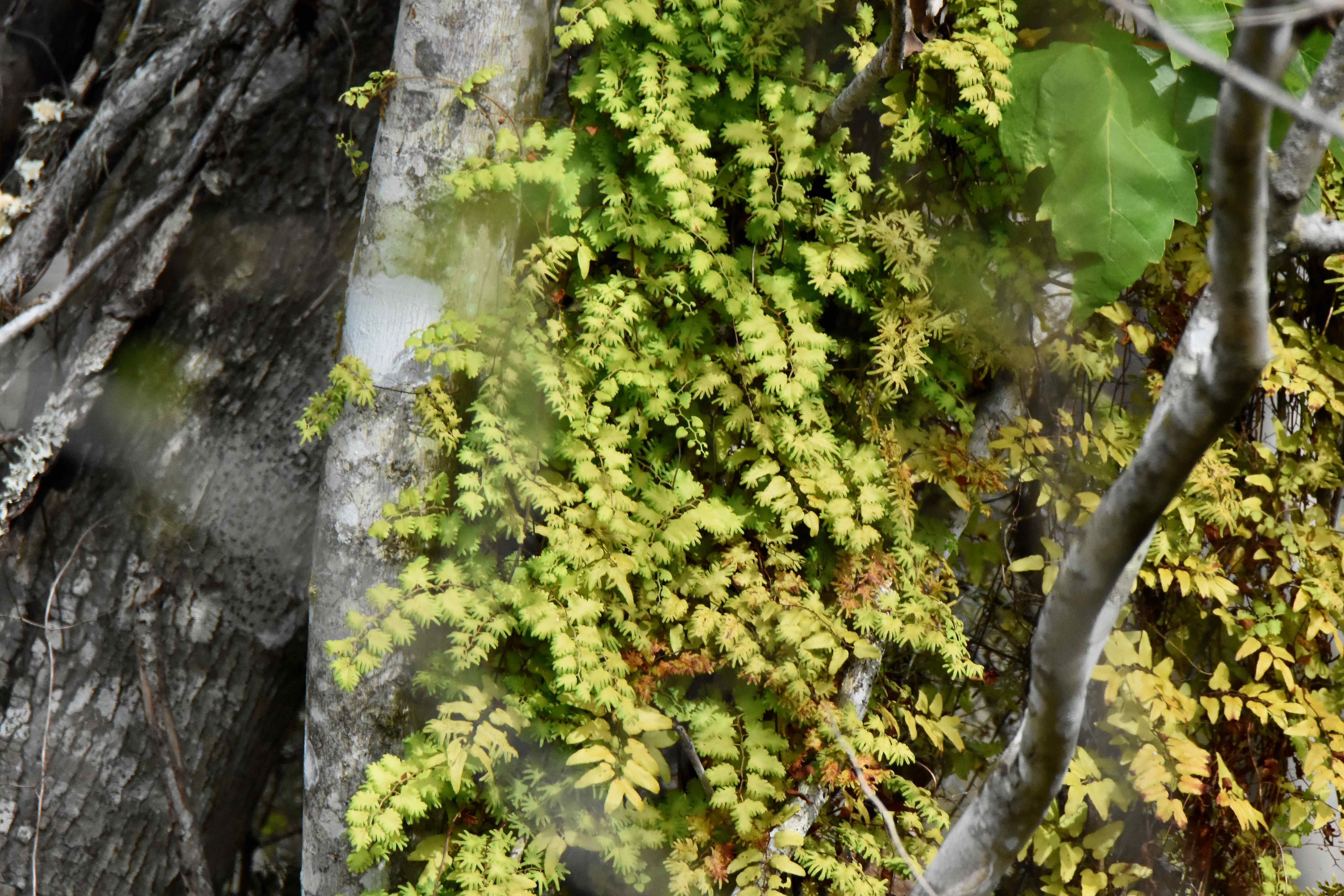
Old world climbing fern, photographed at Green Cay Nature Center, Boynton Beach, Palm Beach County, in January 2019.
Old world climbing fern, Lygodium microphyllum, is a double threat, which might make it the most dangerous of Florida's legion of invasive plants. It is capable of smothering mature trees and shrubs and choking out native orchids, bromeliads and a host of understory plants. It can swallow tree islands whole, figuratively speaking.
But what makes this plant especially dangerous is fire. Old world climbing fern can act as a ladder, allowing a brush fire to reach the upper canopies of forests. A limited fire that would have actually benefited an ecosystem becomes a major conflagration that destroys the ecosystem instead.
Old World is found in swamps, wetlands, wet meadows and hammocks of Florida's Peninsula from Brevard and Hillsborough counties southward. As you might guess, it is a major ecological threat anywhere it's found — only in Florida now, but Texas and Louisiana are believed to be vulnerable as are the Caribbean, Central America and South America. It is listed as a noxious weed in Alabama, Florida and by the federal government.
It is a native of Africa, Southeast Asia, Australia and the South Pacific, and came to Florida likely as an ornamental. It was first found growing in a Delray Beach nursery in 1958. By 1960, naturalists found the first specimens of old world growing in the wilds of Martin County. The Institute for Regional Conservation believes it is being cultivated still, despite the threat it poses. Every photo on this page was taken at a different location within Martin and Palm Beach counties, a small indicator of how widespread the stuff is.
It spreads three ways — by rhizomes, or stems that grow along the ground or just under it; by spores; and by its climbing leaves, which can resprout when clipped from the main plant. It produces spores by the zillions, which can be distributed many, many miles by the wind, particularly during storms, by animals and by humans when the spores attach themselves to clothing and equipment. It produces spores year round, but peaks during the fall — September to November. In 1993, scientists estimated that old world climbing fern covered 27,000 acres; by 2005, the estimate increased to 122,787 acres. And it continues to spread.
Old world climbing fern can be huge; its climbing leaves can reach 90 feet or more (a cousin, Japanese ciimbing fern, Lygodium japonica, can top 100). It can form dense mats, four feet thick or more. It has two types of leaves, one that is arrow-shaped and infertile, and another, shown below, that is ornately lobed — frilly looking in plain language — and produces spores. Thousands of spores. A single leaflet can produce as many as 28,600 spores, according to the University of Florida. The spore-bearing leaves tend to be more numerous where the plant gets the most sunlight. Not only is the plant a fire hazard, it seems to be fire tolerant. One scientist burned a plant with a propane torch. It resprouted.
The best way to control the spread of old world climbing fern appears to be pulling infestations as they develop. That can be a challenge in places like Everglades National Park, which extends over hundreds of thousands of acres. There are herbicides that can be used, but they must be used aggressively, and the fear is that herbicide-resistant strains might develop. Biological controls are being tried with varying degrees of success. A moth know as Astromusotima camptonozale was tried, but it failed to survive in the wild. Scientists tried a second moth, Neomusotima conspurcatalis, which has thrived in the wild, it's larvae feasting on old world climbing fern foliage. It's impact has been limited, however. A gall mite that eats the foliage also has been released and has established itself in the wild, and two other insects are being test.
We can't begin to guess how much money governments at all levels — federal, state, county and municipal — are spending to in order to control old world climbing fern, but it has to be a substantial sum. And even that probably isn't enough. Which underscores the importance of finding an effective, efficient means of control.
Old world climbing fern is a member of Lygodiaceae, the family of climbing ferns.
Click on photo for larger image
Links for Old World Climbing Fern



